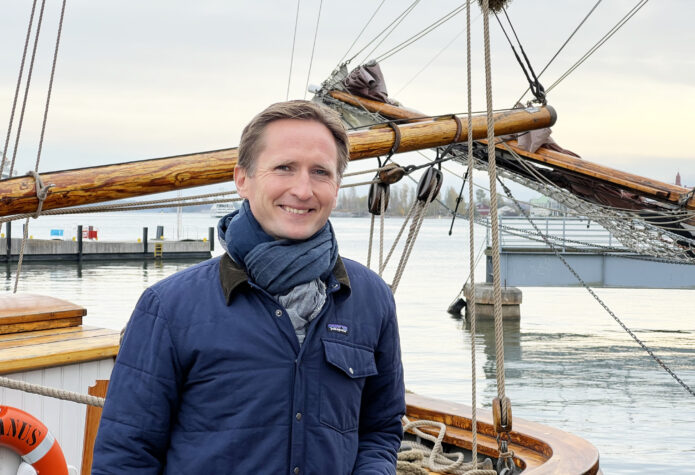Shipwrecks, eutrophication and wastewater treatment

Surveying the potential hazardous spills from shipwrecks off the coast of Estonia, building wastewater treatment plants or exploring new solutions to reduce outflows of nutrients from agricultural fields; the Baltic Sea Action Plan (BSAP) Fund, co-managed by Nefco and NIB, is involved in these and many more such projects.
By Dennis Hamro-Drotz, Fund Manager for the BSAP Fund at Nefco
In 2010, the governments of Sweden and Finland decided to establish a fund to finance early-stage projects, seeking to solve one or several of the environmental problems facing the Baltic Sea. It was agreed that NIB and Nefco would jointly manage this fund, called the Baltic Sea Action Plan (BSAP) Fund. Since the establishment, the fund has completed 47 projects, with 21 active projects.
From shipwrecks to forests
The projects are spread across the Baltic Sea catchment area including Estonia, Finland, Lithuania, Poland, Russia, Sweden, Belarus and Ukraine. The financed projects involve nutrient recycling, manure management, small-scale sanitation plants, wastewater treatment, alternative fuels, or harbour facilities for wastewater management. The first forestry project funded by the Baltic Sea Action Plan Fund is also currently being implemented and is focusing on the promotion of continuous cover forestry to reduce eutrophication in the Baltic Sea.
Another interesting project is being implemented by the Estonian Police and Border Guard. The project is surveying the potential environmental threats posed by shipwrecks to the local marine environment, as numerous shipwrecks have been deteriorating on the Baltic Sea floor for decades, mostly since the Second World War. These shipwrecks contain unknown amounts of heavy fuel oil and other hazardous substances.
Small steps leading to a greater impact
Although 97% of the Baltic Sea is currently still affected by eutrophication, the sea has experienced substantial environmental improvements thanks to various efforts in the catchment area. The intensity of the spring blooms has been reduced since 2000 due to reductions in nutrient loading, and there has been a decrease in nitrogen concentrations in most of the Baltic Sea and an improvement in water clarity. Another key success, partly thanks to funding from both NIB and Nefco, includes the elimination of many hotspots, such as pollution and nutrient outflows from cities and industries.
Although much progress has been achieved over the past 10 to 20 years regarding the environmental state of the Baltic Sea, much still needs to be done. There will be a greater focus on so-called diffuse sources of eutrophication, such as run-off from agricultural fields, the handling of manure from animal farms or as a result of unsustainable forestry practices. Another key challenge is the internal load, where nutrients in the sediments on the sea-floor is released into the water when blue-green algal blooms consume the oxygen in the water, resulting in the release of these compounds from bottom sediments and creating a vicious circle of increasing nutrient loads in the water, leading to new algal blooms.
Added value and looking ahead
The BSAP Fund is a good example of how NIB and Nefco can help early-stage projects get off the ground and provide added value to both project companies and society at large. A recent evaluation of the fund showed that financing from the BSAP fund, provided as early-stage grants, only amounted to 14% of total realised project costs. This means that for every euro provided as a grant, projects managed to raise an additional seven euros. The BSAP Fund is now planning to launch a new call for proposals in early December 2022, seeking project applications with innovative ideas for addressing the various challenges our shared sea is facing. Following this call, the Fund will have used all the funds provided to it. My hope is that Nefco and NIB, with the support of the Baltic Sea countries, will continue to finance projects attempting to solve the challenges still faced by our shared sea.
Read more about the Baltic Sea Action Plan Fund here.